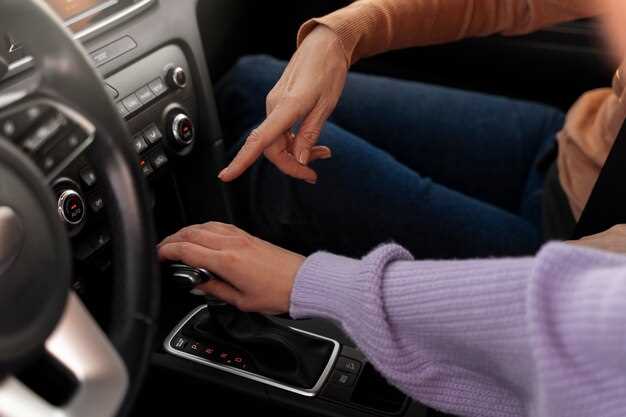
In the realm of automotive design, the importance of driver feedback cannot be overstated. It serves as a crucial element that influences the overall driving experience, impacting everything from comfort and control to performance and safety. One of the most significant components contributing to this feedback is the selection of bucket seats. These specialized seats are not merely an aesthetic choice; they play a pivotal role in enhancing a driver’s connection to the vehicle.
Bucket seats are engineered to provide superior support and stability, thereby allowing drivers to maintain optimal control during dynamic driving situations. With their distinct shape and contouring, these seats facilitate a snug fit that reduces movement, enhancing the driver’s ability to respond quickly to road conditions. The relationship between seat selection and driver feedback becomes even more apparent when considering factors such as seat height, firmness, and material, all of which can drastically influence a driver’s perception of road feel.
This article delves into how the careful selection of bucket seats can lead to significant improvements in driver feedback. By evaluating various seat designs, materials, and their respective configurations, we aim to uncover the key attributes that contribute to an engaging and responsive driving experience. Understanding these nuances not only equips enthusiasts and professionals with the knowledge to make informed decisions but also highlights the critical role that seat design plays in the broader context of automotive performance.
Choosing the Right Bucket Seat for Your Driving Style
Selecting the appropriate bucket seat is crucial for enhancing your driving experience. The right seat not only provides comfort but also influences vehicle control and feedback. Understanding your driving style is the first step in making an informed choice.
For track enthusiasts, a bucket seat with a higher side bolster is ideal. These seats are designed to keep the driver secure during aggressive cornering, allowing for better handling and focus. Look for materials that offer both support and breathability, as these factors contribute to performance during long driving sessions.
If you are a casual driver or use your vehicle primarily for daily commuting, comfort should be prioritized. Choose seats with adjustable features such as lumbar support and reclining options. These adjustments can help accommodate various body types and preferences, ensuring a more pleasant driving experience.
For those who appreciate a sporty flair without compromising everyday usability, consider semi-racing bucket seats. These seats offer a balance of comfort and containment, making them suitable for both spirited driving and daily use. Ensure that the seat complements your vehicle’s interior while still providing necessary support.
Another important factor is the fitment and installation. Ensure the chosen bucket seat aligns with your vehicle’s mounting points. Some aftermarket options may require additional brackets or adapters, so check compatibility before finalizing your selection. Proper installation is essential for safety and performance.
Lastly, evaluate your budget. High-quality bucket seats can vary significantly in price. While investing in a premium seat can enhance your driving experience, there are also many cost-effective options that offer great value. Research multiple brands and models, seeking reviews and feedback from other drivers to make an educated decision.
Understanding the Influence of Seat Design on Driver Sensation

The design of a vehicle’s seat plays a crucial role in shaping a driver’s overall experience, significantly affecting comfort, awareness, and control. Bucket seats, specifically crafted to cradle the body, enhance the connection between the driver and the vehicle, providing crucial feedback during dynamic driving conditions.
Firstly, the ergonomic design of bucket seats promotes a more natural seating position. This alignment reduces fatigue and discomfort, allowing the driver to maintain focus over longer periods. Adequate lumbar support and adjustable features contribute to personalized comfort, enabling drivers to concentrate on their performance rather than suffering from physical strain.
Moreover, the contours of bucket seats secure the driver in place, minimizing lateral movement during sharp turns. This stability improves the driver’s ability to sense and respond to the vehicle’s behavior, resulting in quicker reactions and a more instinctive driving experience. Enhanced feedback from the road is vital for performance-driven scenarios, where precise control and awareness are paramount.
The materials used in seat construction further influence driver sensation. High-quality fabrics and padding contribute to a luxurious feel while providing adequate firmness for support. Additionally, the integration of advanced materials can enhance tactile feedback, allowing drivers to perceive the subtleties of the vehicle’s handling and road conditions more intuitively.
Another critical aspect is the seat’s height and position relative to the steering wheel and pedals. A well-positioned bucket seat enhances visibility, enabling drivers to have a better awareness of their surroundings. This elevated perspective not only boosts confidence but also allows for a more engaging driving experience.
Finally, the aesthetics of the seat design can also impact the driver’s sensation. A visually appealing interior can enhance the overall emotional connection with the vehicle, fostering a sense of pride and ownership that can positively affect driving performance.
In conclusion, the influence of seat design on driver sensation is multifaceted, impacting comfort, stability, feedback, and even emotional engagement. By understanding these aspects, manufacturers can create bucket seats that not only maximize driver feedback but also enhance the overall driving enjoyment.
Adjusting Bucket Seat Position for Optimal Feedback and Control

Achieving optimal driver feedback and control in any vehicle setup begins with the precise adjustment of the bucket seat position. The alignment of the seat is vital, as it significantly influences the driver’s ability to communicate with the vehicle, ensuring stability and responsiveness during dynamic maneuvers.
Seat Height plays a crucial role in visibility and access to controls. A higher seat position can enhance the driver’s field of view, allowing for better awareness of the road ahead and surrounding environment. However, it’s essential to balance height with comfort, as excessive elevation may lead to discomfort during extended periods of driving.
Next, seat angle should be considered. Tilting the seatback slightly can improve support for the spine and shoulders, enabling the driver to maintain a relaxed yet engaged posture. An angle of approximately 15 to 20 degrees from vertical is often ideal, promoting both comfort and control.
Seat Depth affects how close the driver sits to the steering wheel and pedals. Adjusting the seat depth allows for better leg positioning, enabling full range of motion without straining. The driver should be able to press pedals fully without moving from the backrest; adequate space between the knees and the wheel is also essential for safe maneuverability.
Furthermore, lumbar support can enhance driver comfort during long drives. Adjusting the lumbar support helps maintain the natural curve of the spine, reducing fatigue and promoting better control. The lumbar adjustment should be tailored to the driver’s specific needs, as discomfort can divert attention from driving.
Seat Position left-right must also not be overlooked. This factor contributes to hand placement on the wheel and can improve leverage during cornering. The ideal position allows for elbows to be slightly bent while gripping the steering wheel, thus providing optimal feedback as the vehicle reacts to steering inputs.
Finally, testing adjustments throughout the driving experience is crucial. After initial positioning, the driver should engage in both brief and extended drives to assess comfort and control. Minor adjustments should be made based on real-time feedback to finalize the perfect balance between feedback and comfort.
In conclusion, the precise adjustment of bucket seat positions is fundamental for maximizing driver feedback and control. Each adjustment must align with the driver’s unique physiology and driving style to ensure a cohesive connection with the vehicle.













